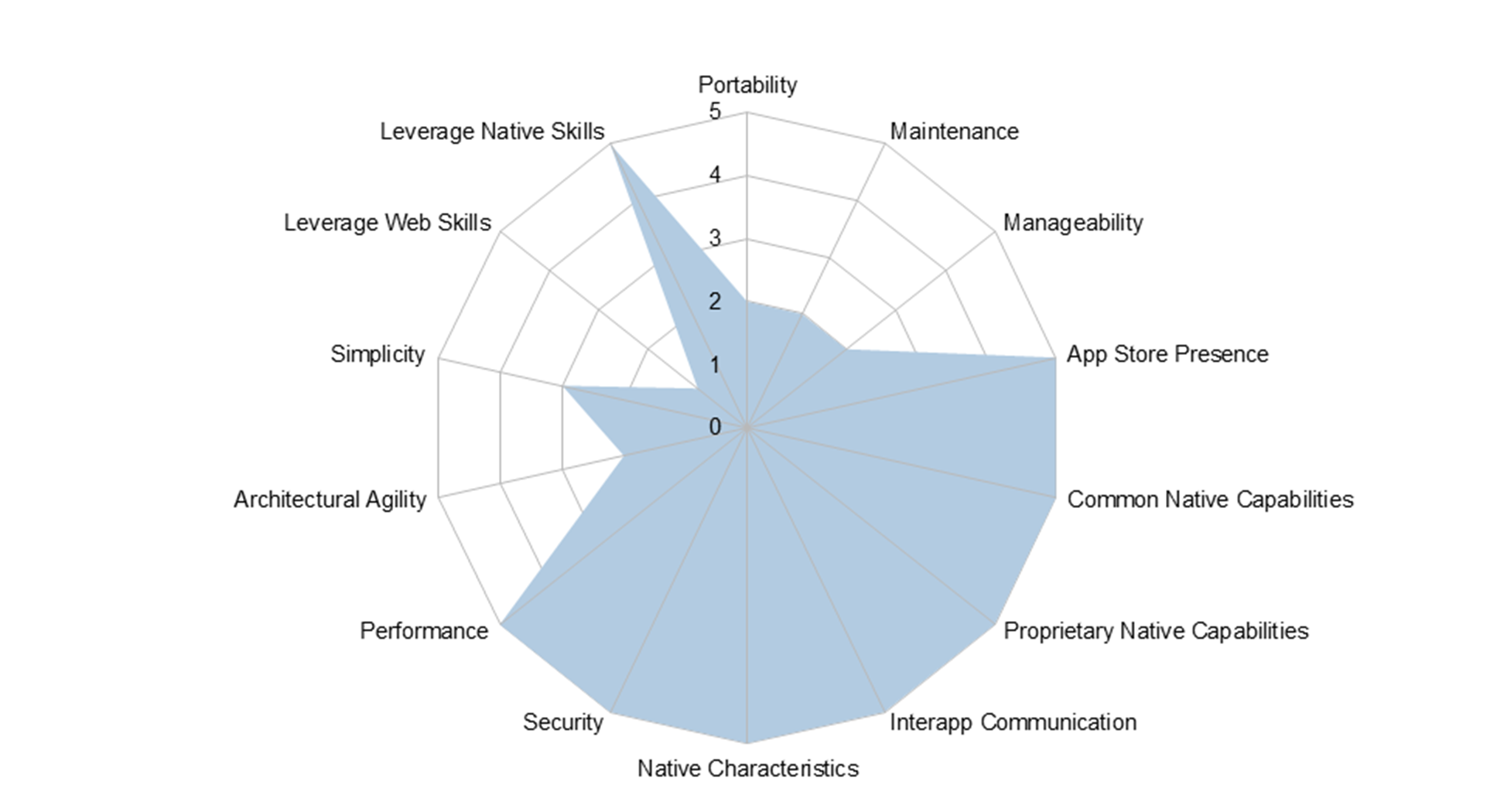| Portability |
The ability to deliver an app to multiple platforms using a single development tool, framework and programming language |
| Maintenance |
The ease with which a development team is able to make changes to a mobile app |
| Manageability |
The ease of delivering an updated version of a mobile app to the mobile device, including the ease of initial deployments to user devices, ease of managing app upgrades, data synchronization, remote wipe, and authentication and authorization |
| App Store Presence |
The presence of an app in an app storefront, such as Apple's App Store or Google Play |
| Common Native Capabilities |
Access to common capabilities found across all mobile platforms, including camera, GPS, calendar and email |
| Proprietary Native Capabilities |
Access to proprietary capabilities found on a single mobile platform �X examples include Touch ID on iOS and widgets on Android |
| Interapp Communication |
The ability for an app to invoke another app and share data |
| Native Characteristics |
The control a developer has on ensuring the app conforms to basic native characteristics, such as an app icon on a home screen, fine-grained control over gestures, and not being required to enter a URL to access the app |
| Security |
The ability to build and/or link security and identity capabilities into the app and to code the app in a secure way |
| Performance |
The rendering, responsiveness and execution speed of the app |
| Architectural Agility |
The ease with which a developer is able to switch between alternative architectures |
| Simplicity |
The overall simplicity of the architectural alternative |
| Leverage Web Skills |
Leverages your team's existing Web development skills |
| Leverage Native Skills |
Leverages your team's existing native development skills |
